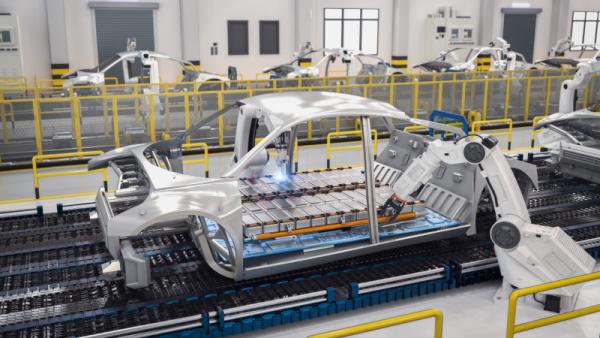Phonlamai Photo / Shutterstock

Marina Yue Zhang, Associate Professor – Research, Australia-China Relations Institute, University of Technology Sydney |
This article appeared in East Asia Forum on March 1 2023.
Clean energy technologies are essential to achieve the decarbonisation targets set in the Paris Agreement. Critical minerals — including lithium, nickel, cobalt, graphite, copper and rare earth elements — are vital to produce clean energy products like solar panels, wind turbines and power batteries for electric vehicles (EVs).
Demand for lithium, a key component in lithium-ion batteries, has soared over the past three years as the clean energy transition accelerates. Though abundant, lithium is unevenly distributed and non-renewable. And until an alternative material for or approach to power batteries becomes available, lithium looks set to be at the centre of geopolitical tensions over the control of critical resources.
The top three producing countries process over 80 percent of the most critical minerals used in lithium batteries. China dominates the processing of almost all minerals, with more than 50 percent of total market share — except for nickel and copper — of which China controls 35 and 40 percent, respectively.
Technology-intensive industries rely on interdependencies between countries with different endowments. This works well during periods of geopolitical stability and cooperation but the high concentration of processing in the lithium battery supply chain means that it is vulnerable to disruption by war, global pandemics, natural disasters or geopolitical tensions.
Australia has the world’s largest battery-grade lithium deposits, and export revenues have skyrocketed, with lithium becoming Australia’s sixth most valuable commodity export. Australia needs to consider how to profit from the boom and what role it can play in the lithium race.
Lithium battery production relies on a global supply chain composed of mineral extraction and production, mineral refinement and processing, and battery-cell production and battery-pack assembly. This supply chain is a complex network of organisations, people, activities, information and resources.
Australia and China complement each other in this supply chain. Australia supplies 46 percent of lithium chemicals and a large proportion goes to Chinese processing facilities and then to Chinese battery and EV makers. China produces 60 percent of the world’s lithium products and 75 percent of all lithium-ion batteries, primarily powering its rapidly growing EV market, which accounts for 60 percent of the world’s total.
The severity of supply chain vulnerability is different for Australia and China. China relies on imports of lithium chemicals from Australia for downstream productions, but it can source lithium from other channels, including its domestic supplies or from South America.
Yet China’s dominance in lithium processing means that few countries could absorb Australia’s supply if China looks to alternative sources. Long lead times in building lithium processing facilities limit the speed at which new production can be ramped up to meet rapid demand increases. Building such capabilities requires capital investment, skilled workers, and an ecosystem where complementary suppliers of components, equipment and services are clustered to minimise costs.
Prioritising national security over economic benefits, the United States and European Union aim to increase their self-sufficiency in the lithium supply chain out of a concern about potential disruption to battery supplies stemming from China’s dominance of production. China could face the possibility of being cut off from the US-led supply chain system.
Australian Industry and Science Minister, Ed Husic, commented: ‘Australia has globally significant deposits of essential battery materials and strong local innovation and research capabilities. By drawing on these strengths, Australia can take its place in the profitable global battery supply chain’. He implied that faced with the geopolitical tensions of lithium, Australia should move from low-value-adding ‘digging it and shipping it’ to a higher value-adding position, including lithium chemical processing and even battery manufacturing.
While Australia has not suffered a ‘resources curse’ in the traditional sense, its resources boom in iron ore and natural gas in the past thirty years has led to the appreciation of the Australian dollar, which has lowered the competitiveness of other exports, especially in manufacturing. In 2021, value-added in manufacturing dropped to less than 6 percent of Australia’s GDP, down from almost 14 percent in 1990.
Australia moving up the value chain would require investment and technology, and bear a significant environmental cost. Without scale advantages, Australian-made products will fail to achieve global competitiveness. Australia must consider long-term industrial policies that enable the country to play a role in fighting against climate change rather than being caught between the superpower competition.
Australia is entangled in the superpower competition between China and the United States over the control of lithium. Chinese EV and battery manufacturers want to invest in Australia’s lithium production, including technology and talent development — as indicated by a deal between Ford and battery manufacturer CATL that will build a battery plant using China’s technology in the United States. But the United States expects Australia to be on board its friend-shoring of supply chains.
Whether Australia can beat the ‘resources curse’ and benefit from the ‘Great Lithium Boom’ will be a delicate balancing act between many factors.
Politicians and policymakers are responsible for making the right choice to balance national and economic security concerns, emergent and incumbent stakeholders as well as current and future needs. Lithium should provide a path to a clean future, not a tool for supremacy of great power competition.
Author
Dr Marina Yue Zhang is Associate Professor – Research at the Australia-China Relations Institute, University of Technology Sydney.


